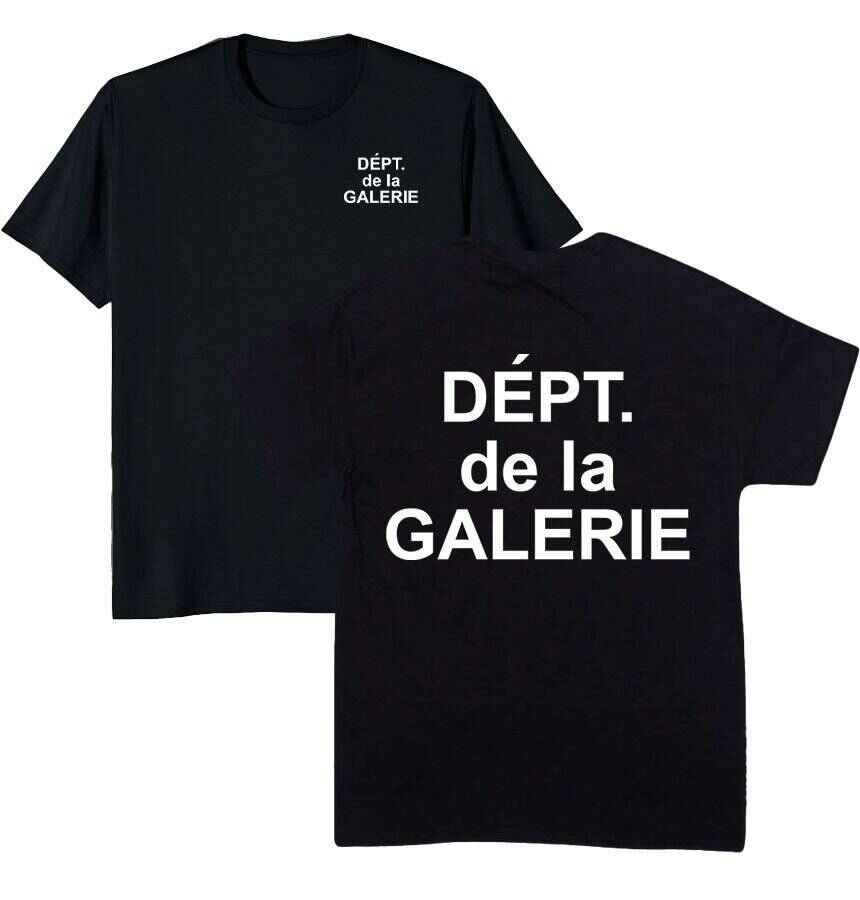Introduction
In the ever-evolving world of fashion, few brands manage to capture the essence of art and individuality as effectively as Gallery Dept. Clothing. Founded by artist and designer Josué Thomas, Gallery Dept. has made a significant mark in the fashion industry by blending artistic expression with high-end streetwear. The brand’s distinctive style, characterized by its repurposed vintage clothing and handcrafted designs, has resonated with a diverse audience, from fashion enthusiasts to celebrities. This article delves into the essence of Gallery Dept. Clothing, exploring its origins, design philosophy, and the cultural impact it has had on the fashion world.
The Origins of Gallery Dept.: A Creative Vision
Gallery Dept. was founded in 2017 by Josué Thomas, a multidisciplinary artist whose passion for art, fashion, and music served as the driving force behind the brand. The name “Gallery Dept.” itself reflects Thomas’s vision of merging a creative studio with a fashion label, where clothing becomes a canvas for artistic expression. Based in Los Angeles, the brand quickly gained attention for its unique approach to fashion, which involved reimagining and repurposing vintage garments into one-of-a-kind pieces.
Thomas’s background in art is evident in every aspect of Gallery Dept. Clothing. The brand’s designs often feature hand-painted details, distressed finishes, and unconventional silhouettes, all of which contribute to its distinctive aesthetic. Each piece tells a story, reflecting Thomas’s creative process and his desire to challenge traditional fashion norms.
Design Philosophy: Art Meets Fashion
At the core of Gallery Dept.’s design philosophy is the idea of merging art with fashion. Unlike many mainstream fashion brands that focus on mass production, Gallery Dept. emphasizes craftsmanship and individuality. The brand’s clothing is often described as wearable art, with each piece meticulously crafted to reflect the brand’s artistic ethos.
One of the key elements that sets Gallery Dept. apart is its use of repurposed materials. Thomas often sources vintage clothing, which he then deconstructs and reassembles into new, innovative designs. This process not only gives new life to old garments but also reduces waste, aligning with the growing trend of sustainable fashion.
The brand’s signature aesthetic includes distressed denim, oversized silhouettes, and bold graphic prints. Each piece is intentionally imperfect, with raw edges, paint splatters, and unique details that add to its authenticity. This approach to design has resonated with a generation that values individuality and self-expression, making Gallery Dept. a favorite among those who seek to stand out from the crowd.
The Cultural Impact of Gallery Dept. Clothing
Since its inception, Gallery Dept. has made a significant impact on both the fashion industry and popular culture. The brand’s unique blend of art and fashion has attracted a loyal following, including high-profile celebrities and influencers. Stars like Kanye West, Travis Scott, and Kendall Jenner have been spotted wearing Gallery Dept. pieces, further cementing the brand’s status as a cultural phenomenon.
The brand’s success can also be attributed to its ability to tap into the zeitgeist of contemporary culture. In a world where authenticity and individuality are increasingly valued, Gallery Dept.’s approach to fashion resonates deeply with consumers. The brand’s emphasis on repurposing and sustainability also aligns with the growing awareness of environmental issues within the fashion industry.
Moreover, Gallery Dept. has managed to create a sense of community among its customers. The brand’s flagship store in Los Angeles serves as more than just a retail space; it’s a hub for creatives, where fashion, art, and music intersect. This sense of community has been further amplified through social media, where the brand regularly shares behind-the-scenes glimpses of its creative process and collaborations with other artists.
Collaborations and Limited Editions: Expanding the Brand’s Reach
One of the ways Gallery Dept. has expanded its reach and maintained its exclusivity is through collaborations and limited-edition releases. These collaborations often involve other artists or brands that share Gallery Dept.’s commitment to creativity and craftsmanship. For instance, the brand has partnered with renowned streetwear labels like Off-White and Nike, resulting in highly sought-after collections that blend the distinct styles of both brands.
These collaborations not only generate buzz within the fashion community but also allow Gallery Dept. to experiment with new ideas and push the boundaries of its design aesthetic. Limited-edition releases, in particular, have become a hallmark of the brand, with each drop eagerly anticipated by fans and collectors alike. The exclusivity of these pieces adds to their allure, making them highly coveted items in the fashion world.
The Future of Gallery Dept.: Staying True to Its Roots
As Gallery Dept. continues to grow and evolve, it remains committed to its core values of creativity, craftsmanship, and individuality. The brand’s future looks promising, with plans to expand its product offerings while staying true to its artistic roots. This includes exploring new mediums and techniques, as well as continuing to collaborate with other creatives who share the brand’s vision.
.Conclusion
Gallery Dept. Clothing is more than just a fashion brand; it’s a movement that celebrates creativity, individuality, and the fusion of art and fashion. Founded by Josué Thomas, the brand has redefined what it means to create wearable art, with each piece reflecting a commitment to craftsmanship and sustainability. As Gallery Dept. continues to make its mark on the fashion world, it serves as a reminder that true style is not just about what you wear, but how you express yourself through what you wear.




